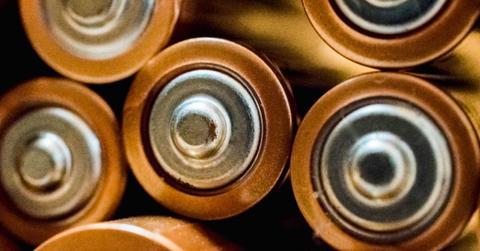Researchers Refigured An Old Type Of Battery To Power The Energy Of The Future
Batteries need to catch up with the advancing technology of clean power generation. A group of scientists at MIT think they may have discovered the perfect material to increase battery storage power immeasurably.
Updated May 20 2019, 4:53 p.m. ET
The use of wind and solar energy to generate power is spreading, but certain aspects of the technology lag behind other components. One of the biggest challenges for scientists developing clean energy is the storage capacity for industrial-size batteries. It seems like researchers at MIT may have finally cracked the code by returning to an old style of battery with an eco-friendly upgrade.
The MIT News Journal reported that the secret is a reconfiguration of the very first battery design from 50 years ago. First posited in 1968, this battery was made from liquid sodium and nickel chloride. These components were separated by a thin membrane of ceramic. The use of this battery style never really caught on. In the real world, ceramic is too fragile for practical use. There are a few specialized industrial places where it is used, but it's extremely rare.
Researchers Donald Sadoway, Huayi Yin and Brice Chung decided to use this basic design, but replace the ceramic with a new type of metal mesh membrane. In theory, this design could be scaled up for use on wind and solar farms. The battery's capacity to hold power is considerably stronger than what's on the market now.
Battery storage is an obsession of Sadoway's; he has even given a TED Talk lecture on the subject, admitting he's gone much further back than 1968 to look for a design. In his discussion, he said that the first battery was invented 200 years ago by a professor named Alessandro Volta, who made it out of a "stack of coins, zinc and silver, separated by cardboard soaked in brine."
Most batteries have basic components. It's mostly size and durability that changes, and for that you need more advanced materials. Sadoway told MIT News that he considers this new membrane mesh a "breakthrough." In their tests, they discovered that not only was the mesh membrane separating the molten components, it was acting as an electrode, and helping to power the battery.
“That really opened our eyes to a completely different technology,” he explained.
Amazingly, despite the advancement, this membrane is actually far, far cheaper than building and maintaining these batteries with a ceramic component. The membrane is made from ordinary steel mesh that is then coated with a solution of titanium nitride, all relatively inexpensive materials and far more durable.
The downside is that these batteries can be quite large and heavy. They likely won't be put into a cell phone or car any time soon. But for a fixed location on an industrial scale, they may be the perfect fit. There are a lot of clean energy enterprises who are looking for a model exactly to these specifications.
